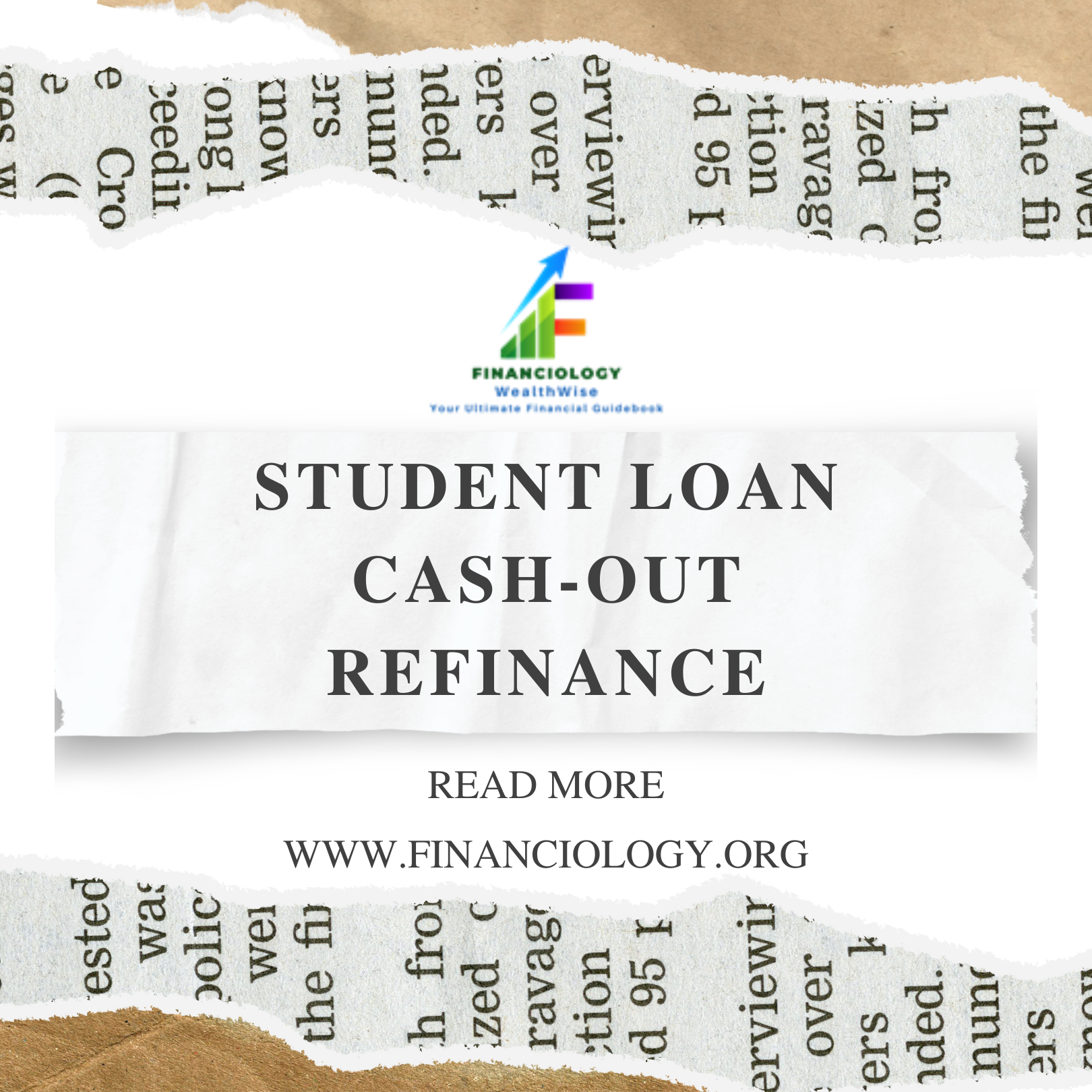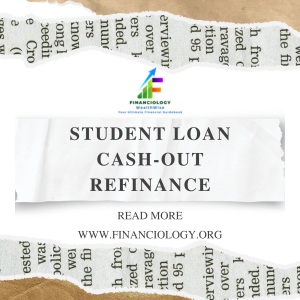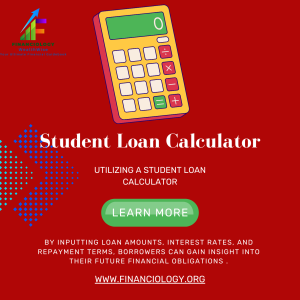A Guide to Student Loan Cash-Out Refinance in 2024
8 min read
Unlock Your Financial Potential with…
Student Loan Cash-Out Refinance
Maximizing Your Education Investment: Learn how student loan cash-out refinance can help you manage your education expenses more effectively, allowing you to achieve your academic goals without unnecessary financial burdens.
In today’s competitive academic landscape, pursuing higher education often comes with a hefty price tag. Many students rely on loans to finance their education, but managing multiple loans with varying interest rates and repayment terms can be overwhelming. Fortunately, there’s a solution that can simplify your financial situation and potentially save you money: student loan cash-out refinance.
What is Student Loan Cash-Out Refinance?

Student loan cash-out refinance is a financial strategy that involves taking out a new loan to pay off existing student loans and receive cashback for any remaining balance. Essentially, it allows you to consolidate multiple loans into a single, more manageable loan with a potentially lower interest rate and more favorable terms.
How Does it Work?
- Evaluation of Current Loans: The first step is to assess your current student loans, including their interest rates, repayment terms, and outstanding balances.
- Application Process: You’ll then apply for a new loan, typically through a private lender or a financial institution. During the application process, the lender will evaluate your creditworthiness and financial situation to determine the terms of the new loan.
- Loan Approval and Disbursement: If approved, the new loan will be used to pay off your existing student loans in full. Any remaining funds will be disbursed to you as cash, which you can use for various purposes, such as paying off other debts, covering living expenses, or investing in further education.
- Repayment: With student loan cash-out refinance, you’ll make monthly payments on the new loan according to the agreed-upon terms. Depending on the terms of the new loan, you may have the option to choose a repayment plan that aligns with your financial goals and budget.
Benefits of Student Loan Cash-Out Refinance
- Simplified Repayment: Consolidating multiple loans into a single loan streamlines the repayment process, making it easier to manage your finances.
- Potential for Lower Interest Rates: Depending on your credit score and financial profile, you may qualify for a lower interest rate on the new loan, which can result in significant savings over time.
- Improved Cash Flow: By receiving cashback from the refinancing process, you can free up funds for other financial priorities, such as saving for emergencies or investing for the future.
- Flexible Repayment Options: Many lenders offer flexible repayment options, including fixed or variable interest rates, as well as various repayment terms, allowing you to choose the option that best fits your needs.
Is Student Loan Cash-Out Refinance Right for You?
Before pursuing student loan cash-out refinance, it’s essential to consider your financial situation and goals. Here are some factors to keep in mind:
- Creditworthiness: Lenders typically require a good credit score and stable income to qualify for favorable terms. If your credit score is less than ideal, you may not qualify for the best rates.
- Current Loan Terms: Evaluate the interest rates, repayment terms, and benefits of your existing student loans to determine if refinancing makes financial sense.
- Long-Term Financial Goals: Consider how student loan cash-out refinance fits into your overall financial plan and whether it aligns with your long-term goals, such as homeownership, retirement savings, or further education.
In Summary: Student loan cash-out refinance can be a valuable tool for managing your education expenses more effectively and achieving your academic goals without unnecessary financial strain. By consolidating your loans into a single, more manageable loan with potentially lower interest rates and improved terms, you can take control of your finances and pave the way for a brighter future.
However, it’s essential to carefully evaluate your options and consult with a financial advisor to determine if student loan cash-out refinance is the right choice for you.
Leveraging State-Funded Subsidies

A Review of Student Loan Assistance Programs:
Explore the Benefits of State-Funded Subsidies for Student Loans: Discover how state-funded subsidies can alleviate the financial burden of student loans, making higher education more accessible and affordable for students.
In the realm of higher education financing, student loans are a common means of funding academic pursuits. However, the cost of education continues to rise, leaving many students burdened with substantial debt upon graduation. Fortunately, state-funded subsidies offer a promising solution to this issue, providing financial assistance to students in the form of reduced interest rates, loan forgiveness, and other incentives.
Understanding State-Funded Subsidies
State-funded subsidies are initiatives implemented by government entities to alleviate the financial burden of student loans and make higher education more accessible to all. These programs aim to support students by offering various forms of financial assistance, such as:
- Reduced Interest Rates: Some states offer student loan programs with subsidized interest rates, meaning the government covers the interest while the student is in school or during periods of deferment.
- Loan Forgiveness: Certain state-funded programs provide loan forgiveness or repayment assistance to students who work in specific fields or underserved areas, such as education, healthcare, or public service.
- Financial Aid Grants: States may allocate funds for need-based grants and scholarships to help students cover tuition, fees, and other educational expenses without accruing additional debt.
Benefits of State-Funded Subsidies
- Affordability: By reducing interest rates and offering loan forgiveness, state-funded subsidies make higher education more affordable for students, particularly those from low-income backgrounds.
- Debt Relief: Loan forgiveness programs alleviate the burden of student debt for individuals who pursue careers in critical fields or contribute to their communities through public service.
- Retention of Talent: State-funded subsidies encourage students to remain in-state for their education and career opportunities by providing financial incentives and support.
- Promotion of Equal Access: These programs promote equal access to education by assisting students who may otherwise struggle to afford higher education.
Is State-Funded Subsidy Right for You?
When considering state-funded subsidies for student loans, it’s essential to evaluate your financial situation and educational goals. Here are some factors to consider:
- Residency Requirements: Some state-funded programs have residency requirements, meaning you must be a resident of the state to qualify for assistance. Ensure you meet the eligibility criteria before applying.
- Program Specifics: Research the specific subsidies offered by your state, including eligibility requirements, application processes, and any limitations or restrictions associated with the program.
- Long-Term Financial Impact: Consider how participating in a state-funded subsidy program may impact your long-term financial goals, such as loan repayment strategies, career choices, and overall financial stability.
State-funded subsidies play a crucial role in making higher education more accessible and affordable for students across the country. By offering reduced interest rates, loan forgiveness, and other forms of financial assistance, these programs provide much-needed support to individuals pursuing academic and career advancement opportunities.
If you’re considering taking out student loans, exploring state-funded subsidy options could help alleviate the financial burden and set you on a path to success.
Exploring Your Path to Financial Freedom

Options for Student Loan Forgiveness
Navigate the Maze of Student Loan Forgiveness Programs: Discover various options for student loan forgiveness, including public service forgiveness, income-driven repayment plans, and other strategies to alleviate the burden of student debt.
Student loan forgiveness has become a beacon of hope for countless individuals burdened by the weight of educational debt. As the cost of higher education continues to rise, many graduates find themselves facing significant financial challenges. However, several options exist for those seeking relief from their student loan obligations, offering pathways to financial freedom and peace of mind.
Understanding The Student Loan Forgiveness Programs:
Student loan forgiveness is a process through which borrowers are relieved of their obligation to repay part or all of their student loans under specific circumstances. These programs are designed to reward individuals who contribute to their communities through public service, work in certain professions, or experience financial hardship.
Exploring Your Student Loan Forgiveness Options
- Public Service Loan Forgiveness (PSLF): PSLF is a federal program that forgives the remaining balance on Direct Loans after the borrower has made 120 qualifying monthly payments while working full-time for a qualifying employer, such as a government organization or nonprofit.
- Income-Driven Repayment Plans (IDR): IDR plans set your monthly student loan payment based on your income and family size. After making payments for a certain period (usually 20 or 25 years), any remaining balance may be forgiven. Examples of IDR plans include Income-Based Repayment (IBR), Pay As You Earn (PAYE), and Revised Pay As You Earn (REPAYE).
- Teacher Loan Forgiveness: This program is available to teachers who work in low-income schools or educational service agencies for five consecutive years. Eligible teachers may qualify for forgiveness of up to $17,500 on their Direct Subsidized and Unsubsidized Loans or Subsidized and Unsubsidized Federal Stafford Loans.
- Public Service Loan Forgiveness for Nurses and Healthcare Professionals: Some states offer loan forgiveness programs specifically for nurses and healthcare professionals who work in underserved communities or critical shortage areas.
- State-Specific Loan Forgiveness Programs: Many states offer their loan forgiveness programs for various professions, such as teaching, healthcare, law enforcement, and legal aid. These programs often have specific eligibility requirements and application processes.
Evaluating Your Eligibility
Before pursuing student loan forgiveness, it’s crucial to assess your eligibility for each program and understand the requirements and limitations involved. Factors to consider include:
- Employment History: Ensure that your current or future employment aligns with the eligibility criteria for the forgiveness program you’re interested in.
- Loan Type: Not all student loans are eligible for forgiveness. Federal Direct Loans, including Direct Consolidation Loans, are typically eligible, while private loans are not.
- Payment History: Maintain a record of your monthly loan payments to ensure you meet the minimum requirements for forgiveness under each program.
Related Posts:
- Advantages of Fannie Mae Mortgage Financing in 2024
- The Best Student Loan Refinancing Companies in 2024
- Benefits of Fannie Mae Student Loans
- Leading Universities in the World
- Review of Princeton University
- Navigating the MyWSU Portal
Final Thoughts:
Student loan forgiveness offers a lifeline to borrowers struggling under the weight of educational debt, providing opportunities to achieve financial freedom and pursue their dreams without the burden of excessive loan payments.
By exploring the various forgiveness options available, borrowers can find relief tailored to their circumstances and embark on a path to a brighter financial future. If you’re weighed down by student loans, consider researching and applying for forgiveness programs that align with your goals and aspirations.





